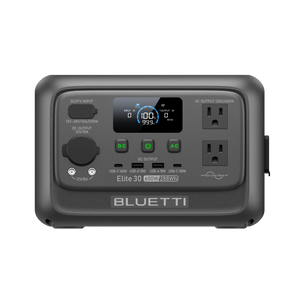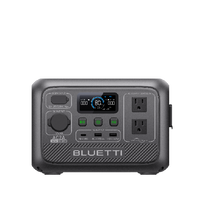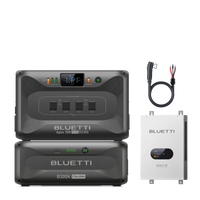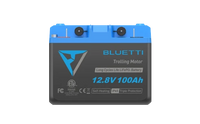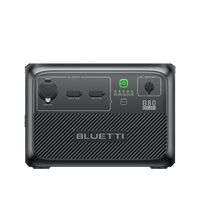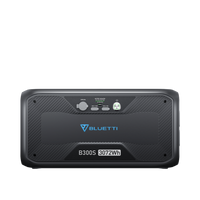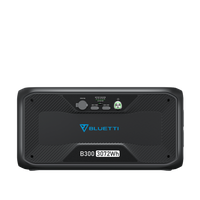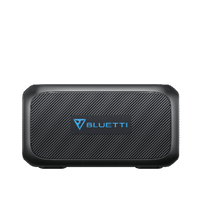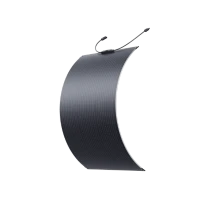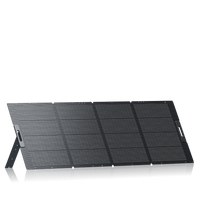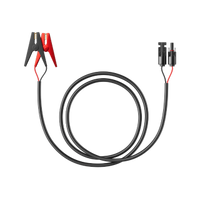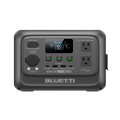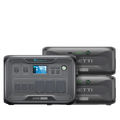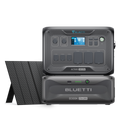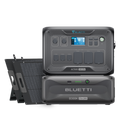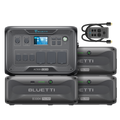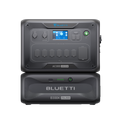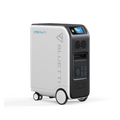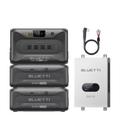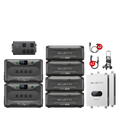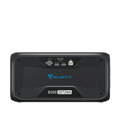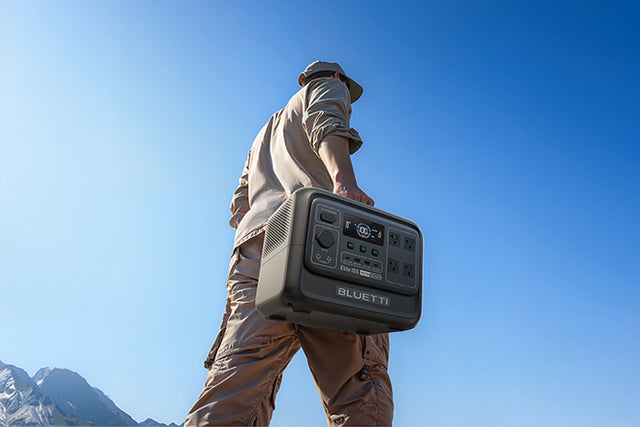Your cart is empty
Shop our productsDiscover the energy consumption of your household appliances with our comprehensive breakdown!
In this article, we delve into the precise energy usage of each appliance, providing you with valuable insights based on average usage times.
We also unveil practical tips to maximize appliance efficiency, select energy-saving models, and unlock the benefits of a greener lifestyle.
Let's embark on this energy-saving journey together!
What Power Rating Are The Appliances In Your Household?

Understanding the power rating of the appliances in your home is critical in establishing what sort of monthly energy consumption you could come to expect.
For your convenience, we created a table highlighting a rough power rating for each of the main appliances in your home:
| Appliance | Power Wattage (W) |
|---|---|
| Refrigerator | 100-600 |
| Washing Machine | 500-2500 |
| Oven | 1000-5000 |
| Microwave Oven | 600-1500 |
| Dishwasher | 1200-2400 |
| Television | 50-400 |
| Vacuum Cleaner | 500-2000 |
| Air Conditioner | 800-5000 |
| Heater | 500-1500 |
| Coffee Maker | 600-1200 |
| Toaster | 800-1500 |
| Blender | 300-1000 |
| Electric Kettle | 1200-2000 |
| Iron | 1000-1800 |
| Hair Dryer | 1200-2000 |
| Food Processor | 400-1200 |
| Rice Cooker | 300-1000 |
| Electric Fan | 30-75 |
| Slow Cooker | 200-400 |
| Blender | 300-1000 |
The next step in figuring out the average energy consumption for each appliance is to add the usage time.
| Appliance | Power Wattage (W) | Usage Hours (per day) |
|---|---|---|
| Refrigerator | 100-600 | 24 |
| Washing Machine | 500-2500 | 1 |
| Oven | 1000-5000 | 1.5 |
| Microwave Oven | 600-1500 | 0.5 |
| Dishwasher | 1200-2400 | 1 |
| Television | 50-400 | 4 |
| Vacuum Cleaner | 500-2000 | 0.5 |
| Air Conditioner | 800-5000 | 6 |
| Heater | 500-1500 | 4 |
| Coffee Maker | 600-1200 | 0.5 |
| Toaster | 800-1500 | 0.25 |
| Blender | 300-1000 | 0.5 |
| Electric Kettle | 1200-2000 | 1 |
| Iron | 1000-1800 | 0.5 |
| Hair Dryer | 1200-2000 | 0.25 |
| Food Processor | 400-1200 | 0.5 |
| Rice Cooker | 300-1000 | 0.5 |
| Electric Fan | 30-75 | 8 |
| Slow Cooker | 200-400 | 2 |
| Blender | 300-1000 | 0.25 |
Finally we can now multiply the power rating by the usage time to establish what the energy consumption of each appliance would be:
| Appliance | Power Wattage (W) | Usage Hours (per day) | Energy Consumption (Wh) |
|---|---|---|---|
| Refrigerator | 100-600 | 24 | 2400-14400 |
| Washing Machine | 500-2500 | 1 | 500-2500 |
| Oven | 1000-5000 | 1.5 | 1500-7500 |
| Microwave Oven | 600-1500 | 0.5 | 300-750 |
| Dishwasher | 1200-2400 | 1 | 1200-2400 |
| Television | 50-400 | 4 | 200-1600 |
| Vacuum Cleaner | 500-2000 | 0.5 | 250-1000 |
| Air Conditioner | 800-5000 | 6 | 4800-30000 |
| Heater | 500-1500 | 4 | 2000-6000 |
| Coffee Maker | 600-1200 | 0.5 | 300-600 |
| Toaster | 800-1500 | 0.25 | 200-375 |
| Blender | 300-1000 | 0.5 | 150-500 |
| Electric Kettle | 1200-2000 | 1 | 1200-2000 |
| Iron | 1000-1800 | 0.5 | 500-900 |
| Hair Dryer | 1200-2000 | 0.25 | 300-500 |
| Food Processor | 400-1200 | 0.5 | 200-600 |
| Rice Cooker | 300-1000 | 0.5 | 150-500 |
| Electric Fan | 30-75 | 8 | 240-600 |
| Slow Cooker | 200-400 | 2 | 400-800 |
| Blender | 300-1000 | 0.25 | 75-250 |
How To Reduce the Energy Consumption of Home Appliance

The best way to offset the energy consumption in your homes appliances is to power the with a solar generator. For example with something like the AC200P.
However, if you do not have access to a solar generator, you could also look into the below tips to reduce your consumption:
Refrigerator
- Set the temperature to the recommended level (around 37-40°F or 3-4°C for the refrigerator and 0-5°F or -18 to -15°C for the freezer).
- Avoid keeping the refrigerator door open for extended periods.
- Ensure proper airflow around the refrigerator by not blocking vents.
Washing Machine
- Wash full loads of laundry instead of partial loads.
- Use cold water whenever possible, as heating water consumes significant energy.
- Opt for high-efficiency (HE) washing machines that use less water and energy.
Oven
- Preheat the oven only when necessary and avoid excessive preheating time.
- Use glass or ceramic baking dishes, as they retain heat better.
- Take advantage of residual heat by turning the oven off a few moments before the cooking time.
Microwave Oven
- Use the microwave for smaller cooking tasks instead of the oven or stovetop.
- Use microwave-safe containers that allow for faster and more efficient cooking.
Dishwasher
- Run the dishwasher with full loads.
- Use the dishwasher's energy-saving mode if available.
- Avoid using the dishwasher's drying cycle and let dishes air dry instead.
Television
- Enable power-saving modes on the TV, such as automatic brightness adjustment and sleep mode.
- Turn the TV off when not used, rather than leaving it on standby mode.
Vacuum Cleaner
- Opt for energy-efficient vacuum cleaners with lower power consumption.
- Clean or replace the vacuum cleaner's filters regularly to maintain efficient operation.
Air Conditioner
- Set the air conditioner to a moderate temperature, preferably around 78°F or 25°C.
- Use energy-saving modes and timers to control the cooling duration.
- Ensure proper insulation and seal any air leaks in your home.
Heater:
- Lower the thermostat setting or use programmable thermostats to adjust the temperature based on occupancy.
- Use space heaters only when necessary and in occupied areas.
Other Appliances
- Unplug appliances when they're not in use to avoid phantom power consumption.
- Use energy-efficient models when purchasing new appliances.
- Consider using power strips with switches to easily turn off multiple appliances at once.
Final Thoughts
Implementing energy-saving practices for household appliances benefits the environment and provides a welcomed boost to your financial well-being.
By adhering to the insightful tips provided above, you can effectively reduce energy consumption, leading to substantial savings on your utility bills while fostering a more sustainable lifestyle.
Remember to adjust temperature levels appropriately, optimize your appliance usage habits, and make eco-conscious choices when investing in new appliances.
When it comes to refrigerators, washing machines, and ovens, simply being mindful of temperature settings and avoiding unnecessary preheating can make a notable impact.
Embracing the convenience of microwave ovens for smaller cooking tasks and making sure to run dishwashers with full loads while skipping the energy-intensive drying cycle are additional steps you can take to conserve energy.
Optimizing the use of televisions by enabling power-saving modes and adopting the habit of fully turning them off when not in use can yield further reductions in energy consumption.
Similarly, selecting energy-efficient vacuum cleaners, setting air conditioners to moderate temperatures, and effectively insulating your home will contribute to making cooling and cleaning processes more energy-efficient.
Moreover, you can effectively minimize energy consumption by controlling heater usage through thermostat adjustments and utilizing space heaters judiciously.
Remember to unplug your appliances when they're not in use, favor energy-efficient models when making new purchases, and harness the convenience of power strips equipped with switches to prevent any unnecessary phantom power consumption.
By incorporating these energy-saving practices into your daily routine, you actively contribute to a greener future, reduce your carbon footprint, and relish the tangible benefits of lowered energy bills.
Embracing an energy-conscious lifestyle not only serves as a personal advantage but also plays a vital role in fostering a sustainable environment for the prosperity of future generations.
